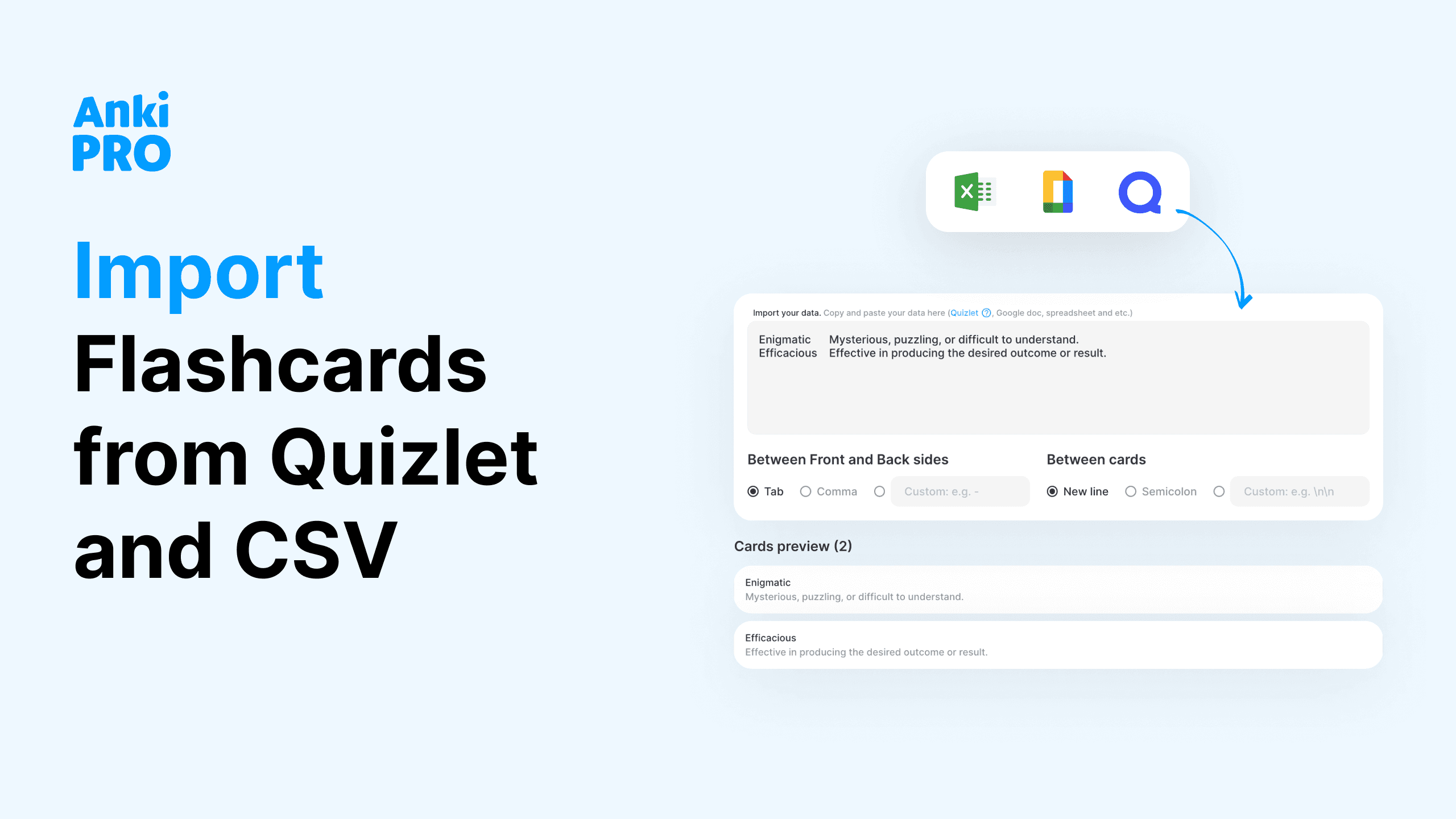Want to unlock the full potential of your memory and turn it into a superpower? If you need to memorize anything for the long-term, the spacing effect is the ultimate hack. This science-backed technique can elevate your ability to retain information effortlessly. Many people don’t realize that memorization is a field studied by scientists, and there are cheat codes to make learning more effective—something they don’t teach you in school.
First Things First: Understanding Memory
To understand the spacing effect, it’s crucial to grasp the concept of memory. Memory is a fundamental cognitive process that allows us to acquire, store, and retrieve information from our past experiences. It involves three key stages: encoding, storage, and retrieval. Encoding is how we initially perceive and process information. Storage refers to how this information is maintained over time, and retrieval is how we access the stored information when needed. Effective memorization depends on optimizing these stages.

Many students fall into the trap of cramming, which means trying to absorb a lot of information in a short period. While cramming might lead to short-term recall, it often results in cluttered and disorganized memory, making long-term retention difficult. In contrast, the spacing effect leverages how our brain naturally processes information, promoting better organization and long-term retention by spacing out learning sessions.
What is the Spacing Effect?
The spacing effect, also known as spaced repetition or distributed practice, is a psychological phenomenon that enhances information retention by spreading out learning sessions over time. Unlike cramming everything into one intense study session, the spacing effect suggests that revisiting information with specific intervals in between allows our brain to better encode, consolidate, and retrieve that information.
This technique works by giving your brain “breathing room” between study sessions. The spacing effect psychology definition revolves around this idea of intervals: instead of overloading your brain, you spread out learning sessions, which helps information stick better.

Historical Background of the Spacing Effect
The spacing effect is one of the oldest and best-documented concepts in the history of learning and memory research. This phenomenon was first identified by German psychologist Herman Ebbinghaus. He discussed the spacing effect in the book called “Memory: A Contribution to Experimental Psychology” in 1885. In the book, he said that people forget over 80% of newly learned information within 24 hours.
During his research of human memory capabilities and causes of forgetting information among people, he was able to coin something called the forgetting curve. Simply put, it is a curve describing the percentage of learned information that people can recall from scratch over time. This scheme has shown how people can store information in long-term memory.
The key idea in the research was that people would have to store information in their long-term memory to alter the forgetting and learning curves. He also noted that it can be achieved through repeating information within certain intervals – the spacing effect.

Benefits of Spacing Effect on Learning
Spaced practice simply means that you will divide the studying sessions into shorter ones while also spreading them out over days, weeks, and, sometimes, months. This strategy is much more effective than cramming (we will compare them below) in the long run, and here is why:
It Works as an Executive Functioning Power Skill
The spacing studying method incorporates the following:
- Breaking down large tasks into smaller and manageable pieces;
- Planning ahead;
- Time estimation on specific tasks;
- Mapping out work.
These skills can be later implemented into almost every sphere of life. Based on this research, students who acquire strong executive function skills are better not only in school achievements but also more successful in life areas like personal finances, health, and overall behavior.
Builds Resistance to Forgetting Information
Gap effect learning or spaced repetition relies on retrieval studying. This method involves calling information that has been stored in the long-term memory to mind. The more you practice recalling memories and knowledge from long-term memory, the easier it will be to access them next time, and the more resistant the information becomes to being forgotten.
Offers Flexible Retrieval of Information
In contrast to traditional learning, which usually takes place in a short period of time and always happens in one environment, spacing learning means that you learn in different retrievals and, therefore, different locations. While this might not feel like a big change, it has been shown to help in the information retrieval process by creating several different recall pathways to memories.
Lets You Fight Procrastination
Procrastination comes from classic cramming. Typical students may commit hours to learn the night before a test, and it won’t guarantee the expected results. Procrastination usually happens when people see a huge amount of tasks they believe they would not be able to manage.
Spacing resolves this issue. We already mentioned that it helps to break down the studying session into several parts while also breaking up large tasks into manageable chunks – which allows students to start their sessions faster and with peace of mind.
Allows to Dive Deeper into the Topic with Ease
The information-retrieving process itself helps to reorganize your memories. Therefore, each retrieval merges new memories with older ones, reinforcing them and allowing you to dive deeper into the topic with ease since your brain can connect new topics with previously learned relevant subjects.
Creates Long-Term Memory
A study shows that the spacing effect is extremely effective for encoding knowledge into long-term memory compared to the alternative approach, traditional one-session learning.
Spaced learning showed results in students who achieved a score higher than those who do traditional learning practice on assessments that are given weeks and months after the initial learning has been done.

The Spacing Effect vs. Cramming
Cramming usually happens during the night. This unhealthy and not effective “tradition” comes from the fear of not passing an exam or not being fully prepared for it. Students consume extremely high amounts of caffeine just to stay awake for as long as humanly possible.
Jokes aside, the key goal of this “practice” is to try to learn as much as possible in a short amount of time. While in some cases this magically works, most often it causes students to perform poorly because of lack of sleep, high-stress levels, and the inability of the brain to accumulate all the information so fast.
Why Doesn’t Cramming Work?
Probably all students have tried this at least once in a while. And generation after generation used cramming as the only way to prepare for the exam the night before it. So how can’t it be effective then?
The answer is pretty simple – cramming relies on short-term memory, meaning the information you have learned is outlived quickly. Although the information can be stored in the brain till the next day, the topic you learned isn’t consolidated properly; therefore, the chances you will forget something are high. Cramming doesn’t allow you to properly understand the topic – you just don’t have enough time.
How Does Spacing Effect Differ?
The spacing effect stands in contrast to the most popular practice of cramming. It doesn’t involve night learning since it offers students an opportunity to consolidate new information within short yet repetitive sessions. The spacing effect also promotes a deep understanding of the topic and long-term retention.
Spaced learning is also often done through a practice known as active recall – it involves using flashcards like Anki Pro. Using flashcards also contrasts with retaining information by cramming, as they help students to recall the information from scratch because they know the topic/subject deeply instead of trying to recall all the mass they tried to learn the night before.

Practical Application of Spacing Effect in Real Life
The spacing effect is obviously great in learning. But as we mentioned, it helps to develop other crucial skills for self-development as well. Therefore, it has several other practical implications for various aspects of life. Let’s’ explore the key ones:
1. Studying
Whether you need to prepare for the exam, just dive deeper into the topic, find a method that works for you in all school or university projects, or start learning new languages – the spacing effect is the way to go.
For example, there is a study performed in 2006 by Dr.Rohrer where he created a two-part study where two parties of students were taught how to solve different math problems. It isn’t surprising that a set of students who used the spacing effect through flashcards completed the math equations and delivered twice as good results compared to those who used traditional cramming.
2. Advertising
The spacing effect can also be used in marketing and advertising. Companies and brands can utilize this effect to create more memorable ads and products. They use advertisements that are spaced apart over a more extended period of time instead of promotions that are aired or seen back to back.
3. Professional and Personal Development
Keeping in mind the spacing effect psychology definition helps to develop some key aspects of healthy and effective work and personal development. Employees can apply it by revisiting training materials and important information at regular intervals. This helps to enhance information retention and support continuous learning.
How to Use the Spacing Effect with Flashcards
While learners have many ways to implement spaced repetition methods, for example, by carving time to practice old material at specific intervals, the easiest and most effective way for a self-learner is to use flashcards.
Flashcards are a spacing effect example that is incredibly effective since they promote active recall in the brain – a process by which we retrieve a memory. Flashcards contain a term or an answer, so students have to actively attempt to remember the meaning or answer without flipping the card.
Although you can take paper and a pen to create your flashcards, Anki Pro has already delivered a convenient solution for spaced repetition. It is an app that offers a vast collection of pre-made flashcards on different subjects, like:
- Math;
- Anatomy;
- Law;
- Geography;
- MCAT.
Besides these cards, Anki also allows students to create their own flashcards based on different subjects and enter needed terms, questions, and answers. The best thing here is that everything is done via phone, so you can study from any location you want without the need to grab all your paper-based cards all day.

Spacing Study Sessions and ADHD Symptoms
The spacing effect can be particularly beneficial for individuals with ADHD symptoms (basically, a huge spectrum). ADHD often affects attention span, memory, and organizational skills, making traditional study methods like cramming less effective. Spaced repetition addresses these challenges by breaking learning into shorter, more manageable sessions with intervals in between.
This approach can reduce cognitive overload and improve focus, making it easier for individuals with ADHD to retain information. With the spacing effect principles applied, those with ADHD can create a more structured and effective learning routine that aligns with their cognitive needs, ultimately enhancing their ability to remember and apply information over the long term.
Last Thoughts on the Spacing Effect
The spacing effect is something they never taught us at school. Representing a powerful tool that harnesses the principles of memory and cognitive psychology, the spacing effect done through flashcards optimizes learning and retention. This method allows students to forget about sleepless nights and chronic stress since it enables learners to achieve lasting knowledge, efficient learning, and deeper understanding. Spacing effect psychology definition is crucial for aquiring the most important soft skill, which is learning.
FAQs
- What is the spacing effect?
The spacing effect occurs when the new information is repeatedly learned within small sessions over a long period. The effect means learners can better understand the topic, recall information from scratch, and develop long-lasting memories.
- What is the spacing effect example?
Here’s a classical spacing effect example. If you’re learning to play a musical instrument, practicing for 30 minutes every day over a week is more effective than practicing for three hours in one day. This spaced approach allows your brain to process and remember the information more effectively.
- How do you use the spacing effect with flashcards?
Spaced repetition is a gap that affects learning and can be powered by using flashcards. Flashcards contain a tem/question and answer/definition. Students can use Anki Pro as a digital way to create and study through flashcards to harness the power of the spacing effect.
- What are the benefits of spaced repetition?
Spaced repetition offers many benefits. The key ones are a deeper understanding of the topic, reduced cognitive load, and faster and more effective learning of any subject and material.










